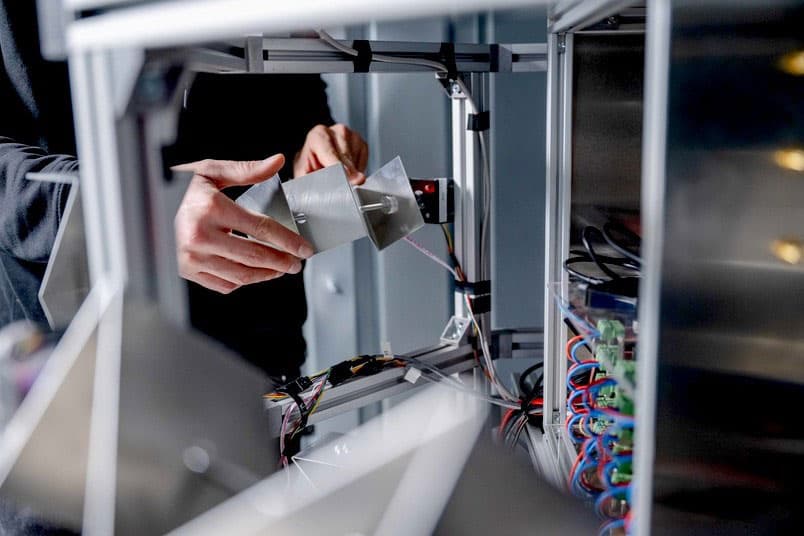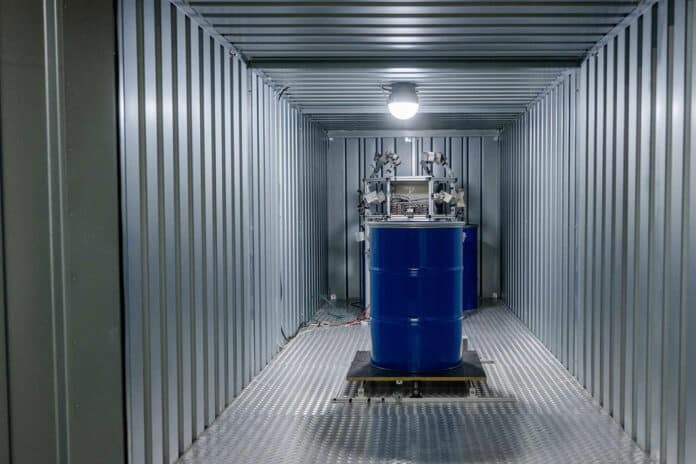Nuclear weapons pose a constant threat to global security. These weapons have enormous destructive power and could cause catastrophic consequences if they fall into the wrong hands or are used intentionally.
Remotely monitoring whether states are complying with nuclear disarmament treaties is a challenging task due to the secretive nature of nuclear arsenals. Now, an international team of IT security experts has developed an innovative method that uses radio waves to remotely monitor whether any changes are being made in a specific room – such as one used to store warheads.
The new remote monitoring approach is based on a radio-wave measurement system to generate fingerprints of a room and its content using an array of randomly oriented mirrors to verify that nothing changes over time.
The team includes researchers from the Max Planck Institute for Security and Privacy in Bochum, Ruhr University Bochum, the University of Connecticut, Harvard University, PHYSEC GmbH, and Technische Universität Berlin, along with SPIA.
“Seventy percent of the world’s nuclear weapons are kept in storage for military reserve or are awaiting dismantlement,” said Sebastien Philippe from Princeton University. “The presence and number of such weapons at any given site cannot be verified easily via satellite imagery or other means that are unable to see into the storage vaults. Because of the difficulties to monitor them, these 9,000 nuclear weapons are not accounted for under existing nuclear arms control agreements.”
The new system uses two antennas to record a radio fingerprint of the room where the weapons are being stored. One of the antennas emits a radio signal that is reflected off the walls and objects in the room, and the other records the signal.

The recorded signal creates a unique radio fingerprint of the room that changes if any object is moved, even minimally. The method can detect major changes, such as the removal of a stored nuclear warhead.
At the campus of Ruhr University Bochum in Germany, researchers conducted an experiment to test the idea of using radiowave technology to monitor movable barrels in a container. The container had barrels that could be moved, and the researchers found that radio fingerprints could be reliably reproduced for individual mirror settings.
Different mirror settings also produced a variety of easily distinguishable radio fingerprints. Even the slightest movement of a barrel in the container was enough to be detected in the radio fingerprint.
The research team also investigated whether machine learning could be used to determine the correlation between mirror positions and radio fingerprints. The results showed that algorithms were able to predict radio fingerprints by recognizing a range of mirror positions and their corresponding radio signals. However, the time required to establish the connection increased as the number of mirrors in the setup increased.
One of the key advantages of this system is it neither requires secure communication channels nor tamper-resistant sensor hardware at the inspected site. Also, the inspection system yields reproducible results in an extensive measurement campaign for a notional storage facility, can detect physical changes on the order of a few millimeters, and is robust against major physical and computational attacks.
“This research project is an excellent example of how novel technologies at the interface between security engineering and radio technologies can be used to solve problems that are of great importance to society,” says Professor Christof Paar of the Max Planck Institute in Bochum in a statement.
“At a time of heightened geopolitical tensions and with a new nuclear arms race brewing, this work is particularly timely and relevant,” concludes Sébastien Philippe.
Journal reference:
- Johannes Tobisch, Sébastien Philippe, Boaz Barak, Gal Kaplun, Christian Zenger, Alexander Glaser, Christof Paar, and Ulrich Rührmair. Remote inspection of adversary-controlled environments. Nature Communications, 2023, DOI: 10.1038/s41467-023-42314-2
